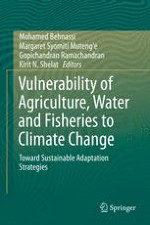2014 | OriginalPaper | Chapter
14. Coping with Climate Change Through Water Harvesting Techniques for Sustainable Agriculture in Rwanda
Authors : Suresh Kumar Pande, Antoni Joseph Rayar, Patrice Hakizimana
Published in: Vulnerability of Agriculture, Water and Fisheries to Climate Change
Publisher: Springer Netherlands
Activate our intelligent search to find suitable subject content or patents.
Select sections of text to find matching patents with Artificial Intelligence. powered by
Select sections of text to find additional relevant content using AI-assisted search. powered by
